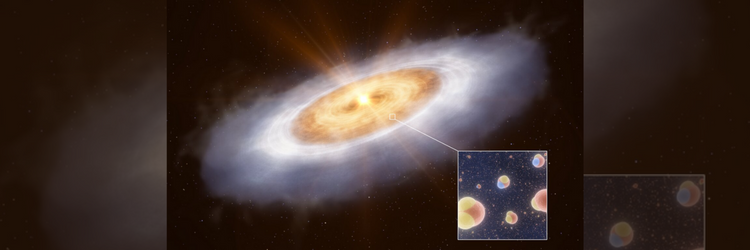
Astronomers Discover Water’s Missing Link in Solar System Formation
Scientists studying a nearby protostar discovered gaseous water in the star’s circumstellar disk, supporting the theory that water on Earth is older than our Sun.
The team used ALMA, the Atacama Large Millimeter/submillimeter Array in the Chilean Andes run by the European Southern Observatory (ESO), to research V883 Orionis’ water composition. The planet-forming disk is about 1,300 light-years from Earth in the constellation Orion.
When clouds of gas and dust collapse, they form a star at the center and a disk of matter around the star. Over millennia, the dust and gas coalesce into comets, asteroids, planets, and moons. The astronomers detected water without any significant changes in its composition in the protoplanetary disk around V883 Orionis. The discovery is a probable link between water in the interstellar medium and the water in our Solar System, indicating that the water on Earth formed billions of years before Earth did.
“We can now trace the origins of water in our Solar System to before the formation of the Sun,” says John J. Tobin, an astronomer at the National Science Foundation’s National Radio Astronomy Observatory (NRAO), USA, and lead author of the study published today in Nature.
“We can think of the path of water through the Universe as a trail. We know what the endpoints look like, which are water on planets and in comets, but we wanted to trace that trail back to the origins of water,” Tobin continued. “Before now, we could link the Earth to comets, and protostars to the interstellar medium, but we couldn’t link protostars to comets. V883 Ori has changed that, and proven the water molecules in that system and in our Solar System have a similar ratio of deuterium and hydrogen.”
Water usually consists of one oxygen atom and two hydrogen atoms. Tobin’s team studied a slightly heavier version of water where one of the hydrogen atoms is replaced with deuterium — a heavy isotope of hydrogen.
Observing water in the circumstellar disks around protostars is difficult because water is present in the form of ice in most systems. V883 Orionis’ disk is quite massive and just hot enough that the water has turned from ice to gas. That makes this protostar an ideal target for studying the growth and evolution of solar systems at radio wavelengths.
Scientists have previously observed the journey of water from clouds to young stars and then later from comets to planets, but until now, the link between the young stars and comets was missing.
“V883 Orionis is the missing link in this case,” says Tobin. “The composition of the water in the disk is very similar to that of comets in our own Solar System. This is confirmation of the idea that the water in planetary systems formed billions of years ago, before the Sun, in interstellar space, and has been inherited by both comets and Earth, relatively unchanged.”
They hope to use ESO’s upcoming Extremely Large Telescope and its first-generation instrument METIS to continue their study. The mid-infrared instrument will help resolve the gas phase of water in these types of disks, strengthening the link of water’s path from star-forming clouds to solar systems.
